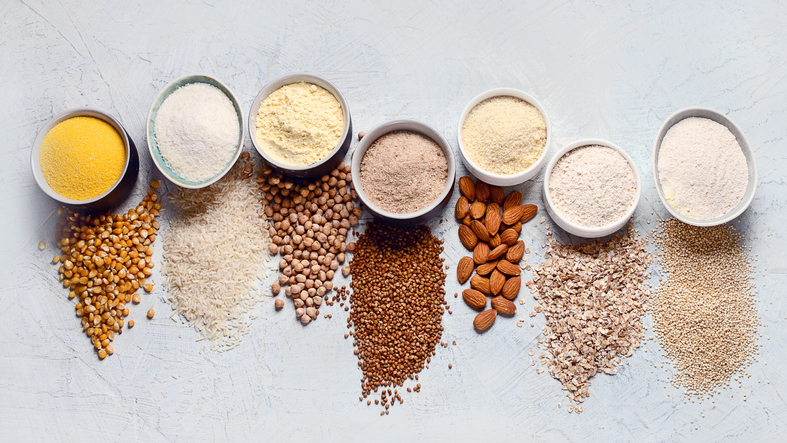
In the bustling world of bakery operations, efficiency, consistency, and product quality are paramount. One critical aspect that influences these factors is the method of ingredient handling. Bakers and bakery owners often face a crucial decision: whether to adopt a batch or continuous ingredient handling system. Each method has its unique advantages and challenges, making the choice highly dependent on the specific needs and scale of the operation. In this blog, we'll delve into the pros and cons of both systems, helping you make an informed decision for your bakery.
Batch Ingredient Handling: Precision and Flexibility
Batch ingredient handling involves measuring and mixing ingredients for a specific amount of product at a time. This method is akin to the traditional baking approach, where each batch is prepared individually, allowing for meticulous control and customization.
Pros of Batch Ingredient Handling:
- Precision and Control: Batch systems offer precise measurement of ingredients, ensuring consistent quality and taste. This is particularly important for artisanal products where slight variations can affect the final product.
- Flexibility: One of the standout benefits of batch processing is its flexibility. It's ideal for bakeries that offer a wide variety of products or frequently change recipes. Adjustments can be made easily without disrupting the workflow.
- Quality Assurance: In batch processing, it's easier to trace back any issues to a specific batch, simplifying quality control and compliance with safety standards. This traceability is invaluable for managing recalls or addressing customer complaints.
- Inventory Management: Managing ingredients and tracking usage is more straightforward, as they are weighed and added per batch. This can help in better inventory control and cost management.
Cons of Batch Ingredient Handling:
- Labor-Intensive: Batch systems often require more manual intervention, increasing labor costs and the potential for human error. This can be a significant downside for bakeries looking to minimize overhead costs.
- Time-Consuming: Preparing individual batches can be time-consuming, especially when considering the time needed for measuring, mixing, and cleaning between batches. This can lead to lower production efficiency.
- Limited Scalability: Scaling up batch production can be challenging and may require additional equipment and space. This can be a limiting factor for bakeries looking to expand their operations.
- Inconsistent Flow: The non-continuous nature of batch processing can result in a less smooth flow of products through the production line, potentially causing bottlenecks and delays.
Continuous Ingredient Handling: Efficiency and Consistency
Continuous ingredient handling, on the other hand, involves a steady and ongoing flow of ingredients into the production line. This method is commonly used in large-scale bakeries where the goal is to maximize efficiency and produce uniform products.
Pros of Continuous Ingredient Handling:
- Efficiency: Continuous systems allow for a constant flow of ingredients, reducing downtime and increasing production throughput. This makes them ideal for high-volume production environments.
- Scalability: Continuous systems are inherently scalable, making it easier to increase production capacity as demand grows. This is a significant advantage for large-scale operations.
- Automation: These systems can be highly automated, reducing the need for manual labor and minimizing the potential for human error. This can lead to lower labor costs and more consistent product quality.
- Consistent Quality: Continuous systems often result in more consistent mixing and blending, which can lead to a uniform product quality. This is particularly important for standardized products that need to meet specific quality benchmarks.
Cons of Continuous Ingredient Handling:
- High Initial Investment: Setting up a continuous system requires a significant investment in specialized equipment and infrastructure. This can be a barrier for smaller bakeries or those with limited capital.
- Complex Maintenance: Continuous systems are more complex and require regular maintenance. This can involve specialized knowledge and increase operating costs, especially if technical issues arise.
- Less Flexibility: Continuous systems are less adaptable to frequent recipe changes or a wide variety of products. They are best suited for standardized, high-volume production, making them less ideal for artisanal or niche products.
- Difficult Troubleshooting: Identifying and correcting issues can be more challenging in a continuous system. The ongoing nature of the process can make it harder to isolate problems, potentially affecting a larger portion of the production run.
Conclusion: Choosing the Right System for Your Bakery
The decision between batch and continuous ingredient handling systems hinges on several factors, including production scale, product variety, and available resources. Batch systems offer precision, flexibility, and easier quality control, making them ideal for small-scale or artisanal bakeries. In contrast, continuous systems excel in efficiency, scalability, and consistent quality, making them perfect for high-volume production.
Ultimately, the best system for your bakery will depend on your specific operational needs and long-term goals. By understanding the strengths and limitations of each method, you can make an informed decision that aligns with your business objectives and helps you deliver delicious products to your customers efficiently.

